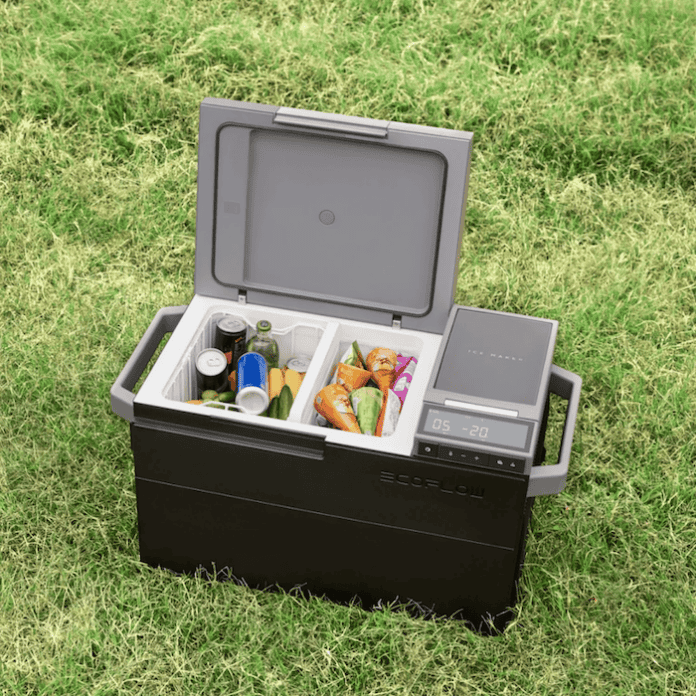Table of Contents
A power outage can strike suddenly, leaving you scrambling to preserve the fresh food you have on hand. Extended power losses can lead to questions about whether food is safe, and knowing what to toss and what to keep is essential to staying healthy in the aftermath.
Below, learn the specifics about what to do with different types of food if your fridge loses its cool so you can minimise waste and protect your health and safety.
When to Save It and When to Throw It Out
The USDA uses a measurement of more than two hours of exposure to temperatures of 4.4º or above to determine whether food should be discarded or kept. Why this temperature and this time period? It’s the danger zone during which bacteria can begin to multiply rapidly and potentially lead to foodborne illness.
Here are some common foods and the USDA’s determination of whether it’s safe to eat or better to toss after reaching that point.
Meat, Poultry, & Seafood
- Raw meat or cooked meat: DISCARD
- Thawing poultry: DISCARD
- Seafood: DISCARD
- Soy meat substitutes: DISCARD
- Lunchmeats, bacon, hot dogs: DISCARD
- Pizza: DISCARD
- Opened canned meats: DISCARD
- Casseroles and soups: DISCARD
- Unopened canned meats: KEEP
Dairy
- Milk or cream: DISCARD
- Sourcream or buttermilk: DISCARD
- Yogurt: DISCARD
- Butter: DISCARD
- Soft cheese (brie, mozzarella, ricotta, cottage cheese): DISCARD
- Hard cheese (cheddar, parmesan, swiss): KEEP
- Shredded Cheese: DISCARD
- Processed Cheese: KEEP
Eggs
- Hard-cooked eggs: DISCARD
- Fresh eggs: DISCARD
- Egg dishes: DISCARD
- Egg products: DISCARD
- Custards or quiches: DISCARD
Fruits
- Cut fruit: DISCARD
- Uncut fruit: KEEP
- Opened fruit juice: KEEP
- Dried fruit: KEEP
- Shredded or diced coconut: DISCARD
- Opened canned fruit: KEEP
Vegetables
- Fresh-cut vegetables: DISCARD
- Pre-cut, pre-washed, or packaged greens: DISCARD
- Cooked vegetables: DISCARD
- Tofu: DISCARD
- Opened vegetable juice: DISCARD
- Uncut vegetables: KEEP
- Fresh mushrooms: KEEP
- Herbs: KEEP
- Baked potatoes: DISCARD
- Jarred garlic in oil: DISCARD
- Potato salad: DISCARD
Sauces & Spreads
- Peanut Butter: KEEP
- Opened mayonnaise-based sauces: DISCARD
- Jelly: KEEP
- Relish: KEEP
- Ketchup: KEEP
- Pickles: KEEP
- Open vinegar-based dressings (opened): KEEP
- Open cream-based dressings: DISCARD
- Opened spaghetti sauce: DISCARD
- Oyster or fish sauce: DISCARD
- Olives: KEEP
Bread, Cakes, Cookies, Pasta & Grains
- Fresh pasta: DISCARD
- Cheesecake: DISCARD
- Refrigerator biscuits, cookie dough, or rolls: DISCARD
- Cooked rice, pasta, or potatoes: DISCARD
- Bread, rolls, cakes, muffins, tortillas: KEEP
- Waffles, pancakes, bagels: KEEP
- Pasta salads: DISCARD
Pies & Pastries
- Fruit pies: KEEP
- Any pies with egg, milk, custard, cheese: DISCARD
- Cream-filled pastries: DISCARD
Food Safety Tips for Power Outages
When an outage strikes, knowing what to do and what not to do can help preserve critical cooling to keep your food fresh and safe to eat. Here are our best tips for food safety during blackouts.
Keep Refrigerator Doors Closed
Every time you open your refrigerator doors, cold air escapes. In normal settings, your refrigerator can quickly return to its ideal temperature using its power connection. But in the case of an outage, you’re letting critical cooling exit, which can lead to your fresh food spoiling quickly.
A closed fridge can maintain its temperature for about four hours without power only if the doors stay closed.
Only open your refrigerator if necessary or to better preserve your food, such as moving it to the freezer or into a backup option like a cooler with ice. Plan ahead to minimise how often and for how long the doors are open.
Freeze Refrigerated Food
If your outage could last four hours or more, move what refrigerated food you can into the freezer to get it as cold as possible. Move essential items to your freezer and group them together to help maintain the cool temperature. You can also fill a cooler with ice, dry ice, or frozen gel packs.
Frozen food will stay safe longer, giving you a longer timeline until you’ll have to toss your goods. Some freezer-friendly refrigerated foods include milk, fresh meat, cheese, and cut fruit or vegetables.
Have a Backup Power Solution
Having something you can rely on in these situations will give you peace of mind and allow you to avoid throwing out and wasting a bunch of food. An EcoFlow Portable Power Station, such as those in the EcoFlow DELTA Series, can keep your refrigerator running for several hours, buying you more precious time and preserving fresh food.
Want something that can do more than just store and provide backup energy? Look into the EcoFlow Smart Generator 4000 (Dual Fuel), which can use solar power or other standard fuel options like propane and gas to keep your battery powered and your refrigerator running.
Another option is a portable refrigerator like the EcoFlow Glacier Portable Refrigerator. Its dual zones can cool and freeze food and even create ice to keep food colder. It works great in a pinch during outages or for adventures like motorhome trips.
Know Where to Find Dry Ice and Block Ice If Needed
Knowing where to purchase dry or block ice will help you in a pinch if your outage has lasted a few hours. Most local gas stations and grocery stores will have this, but you may need to act quickly if the outage affects a large area, as other people may have the same idea.
Fifty pounds of dry ice can keep a small-to-mid-sized freezer filled with food cold for two days. To avoid skin damage, always wear gloves when handling dry ice.
Block ice won’t last as long, but it can still help extend the freshness of your food.
Group Foods Together
Group your foods close together to create stronger cold zones that will help preserve their temperature.
Pro Tip: If you’re using the freezer to store most of your food at this point, always keep any meat in a separate tray on the bottom shelf in case it begins to thaw to avoid juices contaminating any of your other food.
After the Fact: Use a Food Thermometer
Once the outage is over, it’s time to check your food to ensure it’s still safe to eat. Use a high-quality food thermometer to test the internal temperature of your foods, such as meats and dairy.
If the food shows a temperature over 4.4º and you have reason to believe it has been at that temperature for more than two hours, use the list above to determine whether you will need to toss it or if it is safe to keep.
Consider Alternative Cooking Methods
Want to cook your food so it doesn’t spoil during an outage? If you have a natural gas connection, use the stove to cook items like meat, eggs, and poultry. You could also use an outdoor grill or camp stove – just don’t use them indoors, or you risk carbon monoxide poisoning.
Frequently Asked Questions
Food spoilage times can vary based on the initial temperature of the item, the type of food you’re referring to, and the environmental conditions. The USDA notes that many foods can spoil after exposure to temperatures of 4.4ºC or above for four hours or more.
Final Thoughts
When an outage strikes, act quickly to protect your fresh food and prevent spoiling, waste, and potential foodborne illness. Move your food to the freezer or backup coolers like the EcoFlow Glacier Portable Refrigerator, or rely on backup power sources to keep your refrigerator running even when the rest of the power is out.







